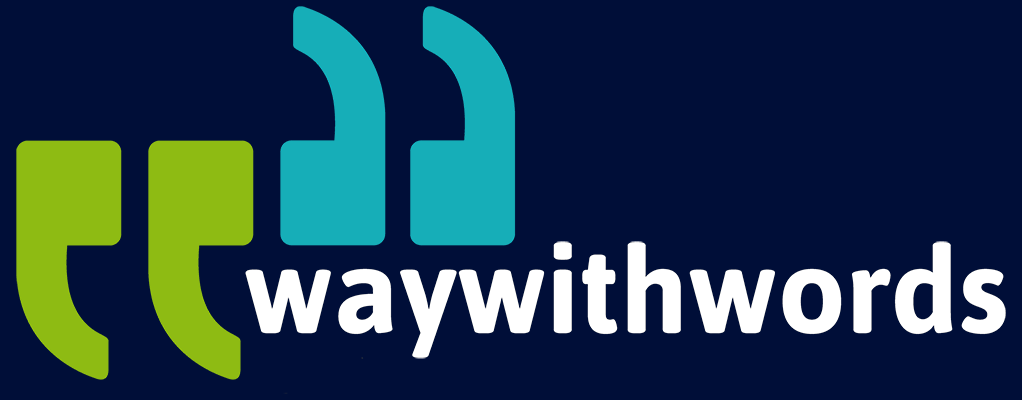Why Do Clients Request Specific Transcript Notations?
A Guide to Transcript Notations, Custom Transcription and Accuracy
Transcripts serve as the written memory of spoken interactions. Yet, capturing mere words on a page often falls short of truly reflecting the richness of live conversation. This is where transcript notations step in. They are the subtle markers that bring transcripts to life — revealing pauses, tone shifts, laughter, and other nuances that give depth and meaning beyond simple text.
But why exactly do clients ask for these specific transcript notations? What difference do they make? And how do they influence the overall accuracy and usefulness of a transcript?
Many clients, whether legal teams, researchers, healthcare providers, or media professionals, often wonder:
- Why do transcripts sometimes include notations like [pause], [inaudible], or [laughter]?
- How do these notations affect the clarity and reliability of a transcript?
- Can transcription services adapt notations to suit industry-specific needs or unique projects?
These questions touch the core of what makes transcription not just a technical task, but an art of capturing human communication in its fullest form.
In this short guide, we will explore the vital role transcript notations play in enhancing transcription accuracy and context. We’ll unpack common types of notations clients request, why these add value across different industries, and how customisation allows transcripts to serve very particular purposes. Along the way, we’ll discuss challenges, technology advances, and practical tips to help clients get the most from their transcripts.
Whether you need a verbatim record of a courtroom hearing, a detailed transcript of a market research focus group, or a precise account of a medical consultation, understanding transcript notations is key to making your transcripts work for you.
Transcription Accuracy – Thoughts & Tips
1. The Role of Transcript Notations in Enhancing Accuracy and Context
Transcript notations act as the unsung heroes of transcription. They are the small symbols, descriptive phrases, or formatting cues that capture what spoken words alone cannot fully convey. Consider a conversation where a speaker hesitates, chuckles nervously, or talks over another person. Without noting these elements, a transcript would read like a flat script, missing vital clues about intent, mood, and interaction dynamics.
For instance, the difference between “I think… we should proceed” and “I think [pause] we should proceed” is subtle but significant. The pause signals hesitation or uncertainty, which may be crucial in legal or clinical settings.
Notations serve to:
- Preserve non-verbal communication, such as sighs, coughs, or laughter, which convey emotion or reaction.
- Capture speech dynamics, including interruptions, overlaps, or stutters, which can indicate tension or enthusiasm.
- Flag unclear or inaudible speech, ensuring transparency and accuracy.
- Provide timing cues, which can be critical in synchronising transcripts with video or audio.
This attention to detail ensures transcripts are not just words on a page, but accurate representations of real communication.
Key points:
- Notations provide a richer, fuller transcript by capturing speech subtleties.
- They add emotional and contextual layers, improving interpretation.
- Transcripts become more truthful and useful when notations are present.
2. Common Transcript Notations Requested by Clients
Clients often request a standard set of transcript notations that reflect everyday conversational features or common recording issues. These notations help manage ambiguity and enhance understanding.
Here are some of the most widely used transcript notations:
- Pauses: Represented by ellipses (…) or timed notations like [pause 3 seconds], these signal hesitation, thinking time, or dramatic effect. For example, “I’m not sure… maybe we can reconsider” versus “I’m not sure [pause 3 seconds] maybe we can reconsider.”
- Inaudible Speech: When audio quality is poor or words are obscured, notations like [inaudible], [unclear], or timestamps indicate missing or uncertain content. This maintains transcript integrity by signalling gaps rather than guessing.
- Laughter: Marked as [laughter] or (laughs), laughter reveals tone — whether amused, sarcastic, or nervous — essential for accurate emotional context.
- Overlapping Speech: Denoted by brackets or tags like [overlapping], this shows when speakers talk simultaneously, a common challenge in lively discussions or debates.
- Emphasis: Italics, bold, or underlining to indicate stressed words or phrases, helping readers grasp the speaker’s intent or urgency.
- Non-verbal Sounds: Such as [cough], [sigh], [background noise], these add context about the environment or speaker condition.
Such notation conventions are often agreed upon before transcription begins to ensure consistency and meet client expectations.
Key points:
- Pauses and inaudibles address timing and clarity issues.
- Laughter and overlapping speech reveal conversational flow and mood.
- Emphasis and non-verbal sounds enrich meaning and environment understanding.
- Consistent notation use builds trust in transcript quality.
3. How Notations Improve the Value and Utility of Transcripts for Analysis
Transcripts are frequently used as foundational documents for detailed analysis. Whether it’s examining witness testimony, evaluating consumer feedback, or coding qualitative research data, the presence of transcript notations transforms the transcript into a powerful analytical tool.
For example, in a legal setting, a pause before an answer might suggest reluctance or uncertainty. Noting this is crucial for lawyers assessing witness credibility. In market research, a participant’s laughter or sigh can reveal genuine reactions beyond words, helping brands understand emotional responses. Media producers use transcript notations to pinpoint exact moments for audio or video editing, ensuring seamless storytelling.
By capturing these details, transcripts allow analysts to:
- Understand conversational dynamics, such as power shifts or interruptions.
- Interpret emotional subtext and non-verbal cues.
- Synchronise transcripts precisely with multimedia content for editing or review.
- Conduct accurate coding and thematic analysis in research.
Notations thus elevate transcripts from simple records to rich, interpretive documents essential for informed decision-making.
Key points:
- Notations reveal hidden layers in conversations.
- Emotional and behavioural cues guide accurate interpretation.
- They support multimedia synchronisation and editing.
- Enhance research validity through thorough transcription detail.

4. Customisation of Transcript Notations for Specific Industries
Not all transcripts are created equal. Different fields demand specific notation standards to meet their unique requirements.
- Legal Industry: Accuracy is critical. Detailed notation of pauses, speaker identification, and interruptions helps capture testimony nuances, important for courtroom clarity and legal proceedings. Even subtle hesitations can influence case outcomes.
- Healthcare: Medical transcription often includes technical jargon, patient pauses, and symptom descriptions. Notations may flag uncertain speech, background noises, or emphases on particular symptoms. Confidentiality and accuracy are paramount.
- Media and Broadcasting: Producers need transcripts that reflect tone, overlapping dialogue, and background sounds for seamless editing. They often require visual notations or timecodes aligned with footage.
- Market Research: Transcripts capture focus group discussions or interviews, highlighting laughter, interruptions, and emotional reactions. These notations guide marketers to authentic consumer insights.
- Academia: Research transcripts must be verbatim, noting every filler word, hesitation, or non-verbal cue. Detailed notation supports rigorous analysis in social sciences and linguistics.
Professional transcription providers understand these distinctions and tailor notation styles accordingly, often using bespoke style guides or client instructions.
Key points:
- Industry-specific transcription demands tailored notations.
- Legal and healthcare require precise, formal notations.
- Media and research need flexible, expressive notation sets.
- Customisation ensures transcripts meet exact client needs.
5. The Impact of Notations on Improving Clarity and Readability
At first, one might think adding lots of notations makes transcripts cluttered and hard to read. But when done properly, notations actually improve clarity by signalling when something unusual or noteworthy happens in speech.
For example, marking [inaudible] prevents readers from guessing missing words and flags sections needing attention. Indicating a [pause] helps readers understand speech rhythm, preventing misinterpretation of hesitations as breaks or changes in thought.
Moreover, separating speaker turns clearly, marking overlapping talk, and noting non-verbal sounds helps readers follow conversations more naturally, especially in complex multi-speaker recordings.
For audiences unfamiliar with the audio, these notations act as helpful signposts, making transcripts more accessible and understandable.
Key points:
- Well-placed notations guide reader understanding.
- They prevent confusion over unclear or missing speech.
- Notations maintain natural flow and speaker distinction.
- Enhance accessibility for users without audio context.
6. The Relationship Between Transcript Notations and Transcription Accuracy
Accuracy in transcription is about capturing not just the words but everything that conveys meaning. Transcript notations are integral to this broader accuracy, helping to document speech nuances and environmental factors that impact interpretation.
For example, if a word is inaudible, it’s better to mark [inaudible] than guess the content. Similarly, noting a speaker’s laughter or a long pause prevents misreading tone or intent.
Transcription providers often maintain strict style guides with notation standards to ensure consistency and reliability across projects. This approach reduces errors and supports clients’ trust in the transcript.
Key points:
- Notations contribute significantly to overall transcription accuracy.
- They help avoid misinterpretation and misrepresentation.
- Style guides and training ensure consistent notation use.
- Accurate notation builds client confidence.
7. Challenges and Limitations in Using Transcript Notations
Despite their value, transcript notations also present challenges:
- Subjectivity: Some notations, such as identifying sarcasm or emotion, depend on the transcriber’s interpretation, which can vary. This introduces a degree of uncertainty.
- Overuse: Excessive notation can clutter the transcript, making it harder to read or overwhelming for end users. Finding the right balance is essential.
- Training: Not all transcribers are equally skilled in applying nuanced notations. Proper training and experience are necessary for high-quality results.
- Cost and Time: More detailed notation often requires additional time and resources, potentially increasing transcription costs.
Clients and providers must work together to set clear guidelines that match project goals without sacrificing usability.
Key points:
- Notation interpretation can be subjective.
- Over-notation reduces readability.
- Skilled transcribers are key to quality.
- Detailed notations may increase costs and turnaround times.

8. Technologies Supporting Accurate Transcript Notations
Recent advances in transcription technology support better integration and accuracy of transcript notations.
AI-driven speech recognition can detect speech patterns such as pauses, overlaps, and unclear words, flagging them for human review. This hybrid model speeds up the process while maintaining quality.
Additionally, transcription platforms often allow clients to specify notation preferences upfront, which guides transcribers and automates certain notation insertions.
These technologies help:
- Ensure consistent application of notation rules.
- Improve turnaround times without compromising detail.
- Provide clients with transcripts tailored to their notation needs.
Still, human expertise remains vital to interpret context and nuances that AI can miss.
Key points:
- AI assists in detecting notation-worthy speech events.
- Human review ensures contextual accuracy.
- Custom notation settings improve client satisfaction.
- Technology enhances but does not replace skilled transcriptionists.
9. How Clients Can Specify Notations for Custom Transcription
To get transcripts with the right notations, clients should communicate clearly with their transcription provider.
Key steps include:
- Defining which notations are essential (e.g., pauses, laughter, inaudibles).
- Providing examples or existing style guides for reference.
- Specifying how detailed the transcript should be—verbatim, clean read, or something in between.
- Discussing any industry-specific requirements or terminology.
Clear instructions upfront reduce revisions and ensure transcripts meet expectations.
Key points:
- Clear communication improves notation accuracy.
- Examples or style guides provide helpful benchmarks.
- Discuss industry needs and project scope in detail.
- Collaborate with providers to refine notation use.
10. The Future of Transcript Notations in Enhancing Transcription Services
Looking ahead, transcript notations are set to become even more sophisticated.
Emerging technologies in speech analytics and emotion detection will allow for:
- Automated recognition of tone, sentiment, and speaker intent.
- Real-time notation insertion during transcription.
- Richer multimedia integration with video and audio content.
These advances will provide clients with even more detailed and actionable transcripts. However, the human element — experienced transcribers interpreting context and nuance — will remain crucial.
Transcripts will continue evolving from simple records to comprehensive communication tools, shaped by client needs and technological progress.
Key points:
- Future transcription will feature advanced emotion and tone detection.
- Real-time, automated notations will speed workflows.
- Integration with multimedia will improve usability.
- Human expertise will remain vital for context and quality.
5 Key Tips for Clients on Specifying Transcript Notations
- Be Specific and Clear: Detail which notations you want and why, avoiding vague instructions.
- Prioritise What Matters: Focus on notations that add value for your purpose to avoid clutter.
- Use Examples: Share sample transcripts or style guides to clarify your expectations.
- Consider Your Audience: Tailor notations to suit who will read and use the transcript.
- Partner with Professionals: Choose transcription services experienced in your industry and notation style.
Transcript notations are far more than editorial flourishes; they are essential tools that transform transcripts into accurate, context-rich records of spoken communication. By marking pauses, laughter, inaudible words, and other speech nuances, these notations preserve meaning that would otherwise be lost in plain text.
Across industries—from legal to healthcare, media to market research—customised notations enable transcripts to fulfil very specific needs. They improve accuracy, enhance clarity, and provide valuable insight into the emotional and behavioural subtext of conversations.
While challenges exist in applying notations — such as subjectivity and balancing detail with readability — advances in transcription technology and collaboration between clients and providers continue to raise the standard.
For anyone commissioning transcripts, the key advice is to communicate your notation preferences clearly and work with skilled professionals who understand your industry’s nuances. This approach ensures transcripts that are not only precise but truly useful for analysis, decision-making, and record-keeping.
Transcript notations unlock the full potential of transcription—turning words on a page into living, breathing stories of human interaction.
Further Transcription Resources
Notational Conventions Resource – Explore the use of notational systems in transcription and academic writing:
Way With Words Transcription Services Resource – Discover how skilled transcriptionists handle complex audio and notation requirements:
